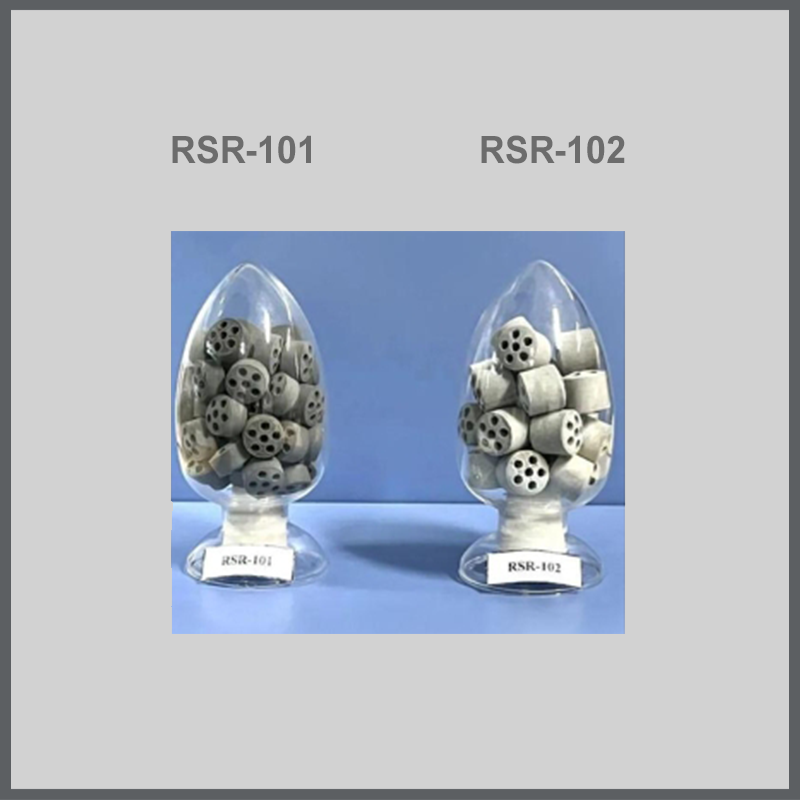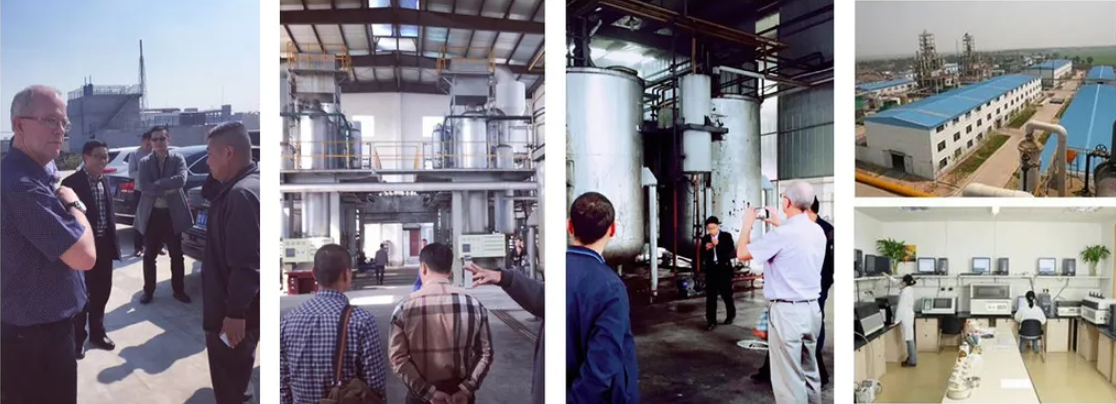products
Energy saving catalyst for steam reforming of light hydrocarbons for hydrogen production
This catalyst exhibits high activity, strong resistance to carbon deposition, and excellent feedstock adaptability. It operates stably at low water-to-carbon ratios, achieving near-theoretical hydrocarbon conversion while significantly reducing carbon deposition and equipment corrosion. Industrial applications have shown that its use reduces energy consumption in hydrogen production units by approximately 10%, while also reducing CO2 emissions, resulting in significant economic and environmental benefits.

◼PRODUCT DESCRIPTION
RSR-101/102 is a new type of energy-saving light hydrocarbon steam reforming hydrogen production catalyst developed by the Institute of Petroleum Science in recent years. The catalyst has comprehensively improved the catalyst reaction performance through the optimization design of the formulation, the innovation of the preparation method and the improvement of the catalyst geometry structure. It is suitable for various processes such as steam reforming of liquefied gas, refinery gas, natural gas and other hydrocarbons as raw materials to produce hydrogen, ammonia synthesis gas, methanol synthesis gas,carbonyl synthesis gas, carbon monoxide, etc.
◼ECONOMIC BENEFITS
Sinopec's independently developed new energy-saving light hydrocarbon hydrogen production catalyst RSR-101/102 has been successfully applied in Luoyang, Shanghai and Jingmen Petrochemical. Industrial data show that the catalyst can operate stably at a water-carbon ratio of 3.0-3.2, reducing the energy consumption of hydrogen production by 10%, significantly reducing production costs, and reducing CO₂ emissions per unit of hydrogen, which has both economic and environmental benefits, and plays an important supporting role in improving the independent innovation capabilities of refining technology and green and low-carbon development.
◼PRODUCT PACKAGING
RSR-101/102 series light hydrocarbon steam reforming hydrogen production catalysts are packaged in iron drums, with a net content of 160-180 kg per drum, or packaged according to user
requirements. The transportation vehicle should be dry, and should be handled with care during loading and unloading. Impact is strictly prohibited to avoid damage. The product should be stored in a cool and ventilated place, avoid humid environment, and stay away from fire. The product shelf life is 24 months.

◼TECHNICAL INDEX
RSR-101/102 series light hydrocarbon steam reforming hydrogen production catalyst has six major characteristics of "one high, three strong, two small", namely
(1) high conversion activity, can achieve near thermodynamic equilibrium conversion, the equilibrium temperature distance is less than 5℃.
(2) strong C2+ hydrocarbon cracking ability, can prevent heavy hydrocarbons from penetrating and causing carbon deposition.
(3) strong anti-carbon deposition performance, can achieve low water-carbon ratio long- term stable operation.
(4) strong raw material adaptability, suitable for industrial hydrogen production equipment with natural gas, refinery dry gas and liquefied gas as raw materials.
(5) low corrosion to equipment, avoid the problem of K loss of traditional hydrogen production catalyst, and prevent equipment corrosion.
(6) small bed pressure drop, can reduce the compression system load and reduce compression power consumption.
Under the same device load conditions, compared with the reference agent, the catalyst bed pressure is reduced by 8~10%, the outlet temperature is 5~20℃ lower, and theoperating water-carbon ratio is 0.2~0.5 units lower.


◼What is the core innovation of the RSR-101/102 catalyst? What are the main differences from traditional catalysts?
Its core innovation lies in achieving exceptional performance through comprehensive optimization of its formulation, preparation method, and geometric structure, achieving the hallmarks of "one high, three strong, and two small." Compared to traditional catalysts, its most significant difference lies in its ability to operate stably at lower water-to-carbon ratios (3.0-3.2) and its excellent resistance to carbon deposition, fundamentally addressing the carbon deposition and equipment corrosion issues caused by heavy hydrocarbon cracking or potassium loss. Furthermore, this catalyst exhibits a lower bed pressure drop, reducing system energy consumption by approximately 10%.
 ◼What specific economic benefits can “stable operation with low water-carbon ratio” bring to enterprises?
◼What specific economic benefits can “stable operation with low water-carbon ratio” bring to enterprises?
Reducing the water-to-carbon ratio is key to energy conservation and consumption reduction in hydrogen production plants. A reduction of 0.2-0.5 units in the water-to-carbon ratio significantly reduces the fuel gas required to produce the same amount of steam. Industrial application data shows that using RSR-101/102 catalysts can directly reduce the overall energy consumption of hydrogen production plants by 10%, significantly reducing fuel costs and CO₂ emissions. This yields significant economic and environmental benefits.

◼How adaptable is the catalyst to the raw materials? Can it process low-quality raw materials?
This catalyst boasts robust feedstock adaptability and is specifically designed for processing complex feedstocks. It is highly effective for natural gas and liquefied petroleum gas (LPG), and is particularly adept at processing refinery dry gas with complex composition and high levels of C2+ heavy hydrocarbons. Its enhanced C2+ hydrocarbon cracking capacity and carbon deposition resistance effectively prevent heavy hydrocarbon penetration, ensuring stable unit operation despite feedstock fluctuations.

◼What is the significance of “balanced temperature difference less than 5°C” mentioned in the product introduction?
The "equilibrium temperature difference" is a key indicator of catalyst activity. It refers to the difference between the actual reaction temperature and the theoretical thermodynamic equilibrium temperature. The smaller the difference, the higher the catalyst activity. The RSR-101/102 can control this temperature difference within 5°C, indicating that its conversion efficiency is close to the theoretical limit, resulting in more complete hydrocarbon conversion, higher hydrogen yield, and extremely optimal raw material utilization.

◼What issues should be paid attention to when replacing your company's catalyst in industrial equipment?
The replacement process is typically quick and efficient. RSR-102 (lower stage catalyst) offers enhanced cracking and carbon deposition resistance, while RSR-101 (upper stage catalyst) boasts high activity and stability. The combination of these two catalysts provides low bed pressure drop, eliminating any special requirements for existing reactor internals or downstream compression system loads. We can provide detailed technical solutions and loading instructions to ensure a smooth and efficient catalyst changeover.

Request a Quote
Related Recommendations





